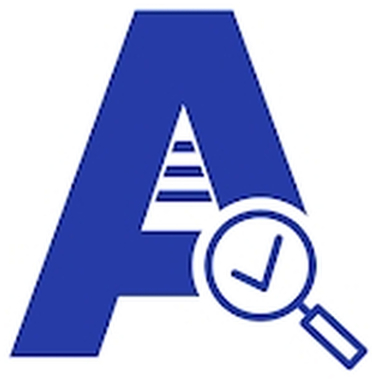Perform Kitchen SOP Assessment using eAuditor
Kitchen SOP (Standard Operating Procedure) refers to a set of structured, written guidelines that detail how specific tasks should be performed in a kitchen to maintain consistency, hygiene, safety, and efficiency. It helps ensure that all staff members follow the same standards when handling food, using equipment, cleaning, and managing inventory, leading to smoother operations and compliance with health regulations.

Performing a Kitchen SOP Assessment using eAuditor ensures a thorough evaluation of kitchen procedures, hygiene standards, and compliance with food safety protocols, supporting consistent, efficient, and safe kitchen operations. This assessment plays a critical role in identifying gaps in daily practices, reinforcing proper methods, and ensuring that all staff consistently follow the established operational guidelines. By using eAuditor, the entire process is digitized, making inspections more efficient, traceable, and actionable through real-time data collection, multimedia documentation, and automated reporting.
-
Purpose of the Assessment
The Kitchen SOP Assessment using eAuditor is conducted to evaluate whether kitchen staff are adhering to established Standard Operating Procedures across all operational areas. The purpose is to:
- Maintain consistency in kitchen workflows and task execution
- Uphold food safety and hygiene standards in accordance with health regulations
- Prevent contamination and reduce the risk of foodborne illnesses
- Monitor staff compliance with roles and responsibilities
- Ensure kitchen equipment and tools are used and maintained properly
- Support continuous improvement through data-driven decision-making
By routinely assessing SOP adherence, management can proactively address operational inefficiencies and training needs.
-
Setting Up the eAuditor Template
2.1 Identify Critical SOP Categories to Include
To ensure a comprehensive assessment, the template should address the following areas:
- Food Handling Procedures
- Use of gloves and utensils
- Avoiding cross-contamination
- Proper thawing and marinating techniques
- Preparation and Cooking
- Use of sanitized chopping boards and knives
- Cooking temperatures and holding procedures
- Allergen management and labeling
- Cleaning and Sanitation
- Frequency of surface and equipment cleaning
- Use of approved cleaning chemicals
- Clean-in-place (CIP) procedures for machines
- Storage and Inventory Control
- FIFO (First In, First Out) implementation
- Temperature logs for refrigerators and freezers
- Sealed, labeled, and dated food containers
- Waste Management
- Proper segregation of waste (organic, recyclable, hazardous)
- Covered, clean, and strategically placed bins
- Timely disposal and recordkeeping
- Personal Hygiene and Behavior
- Clean uniforms and protective gear
- Handwashing stations with soap and sanitizers
- No jewelry or personal items in prep areas
2.2 Customize the eAuditor Checklist
When building the template in eAuditor:
- Use multiple-choice or Yes/No formats for faster inspection
- Include comment fields for observations and clarifications
- Add photo capture fields to visually document non-conformance or good practices
- Use conditional logic to skip irrelevant sections
- Incorporate digital signatures for inspector and supervisor authentication
- Allow real-time syncing across multiple devices for team collaboration
-
Performing the Assessment
3.1 Pre-Inspection Preparation
- Inform staff about the upcoming audit and its objectives
- Review the current version of kitchen SOPs and ensure access on mobile devices
- Prepare mobile or tablet devices with the eAuditor app and the latest checklist

3.2 On-Site Inspection Process
Conduct the inspection during actual kitchen operations to observe real-time practices. Focus on:
- Workstation hygiene: Are surfaces cleaned before and after use?
- Food preparation: Are staff using the correct techniques and tools?
- Cooking practices: Are internal food temperatures being measured and recorded?
- Staff hygiene: Are hairnets, gloves, and aprons used properly?
- Storage: Are raw and cooked foods stored separately and at correct temperatures?
- Equipment checks: Are machines cleaned and maintained after use?
While conducting the inspection:
- Mark each item as Compliant, Non-Compliant, or Not Applicable
- Add explanatory notes and capture photos of violations or good practices
- Engage with staff on the spot for clarification and awareness
3.3 Real-Time Documentation and Observations
- All entries are saved in real-time and backed up in the cloud
- Use the voice-to-text feature for rapid documentation
- Timestamped records help trace issues to specific shifts or staff
-
Reporting and Follow-Up Actions
4.1 Automatic Report Generation
Once the assessment is completed:
- eAuditor generates a full report with:
- Compliance scores per section
- A breakdown of non-conformance issues
- Photographic documentation and comments
- Inspection timestamp and inspector details
- Reports can be exported in PDF, Excel, or shared via email instantly with stakeholders

4.2 Assign and Monitor Corrective Actions
For each non-compliant item:
- Assign corrective actions to the responsible team member directly within the app
- Include due dates, priority level, and task description
- Monitor progress in the Action Dashboard, which shows overdue or pending items
4.3 Feedback, Debriefing, and Training
- Hold post-assessment meetings with kitchen staff to review findings
- Recognize departments or individuals for compliance and best practices
- Identify patterns in recurring issues for targeted re-training
- Update existing SOPs if they are outdated, unclear, or impractical
-
Ongoing Monitoring and Best Practices
To sustain kitchen performance and SOP compliance:
- Schedule routine assessments using eAuditor’s recurring scheduling tool (daily, weekly, monthly)
- Use trend analysis and dashboards to monitor improvements or regressions over time
- Integrate other forms, such as opening/closing checklists, temperature logs, and deep-cleaning schedules, into the same platform
- Encourage proactive reporting from staff by giving them access to submit observations or near-misses
Summary
Performing a Kitchen SOP Assessment using eAuditor enables food service establishments to uphold operational standards, food safety protocols, and employee accountability through a structured, digital workflow. The platform provides a robust framework to observe actual practices, identify non-compliance, and implement timely corrective actions. Over time, this not only ensures consistent service quality and regulatory compliance but also fosters a culture of excellence, transparency, and continuous improvement across the entire kitchen team.


